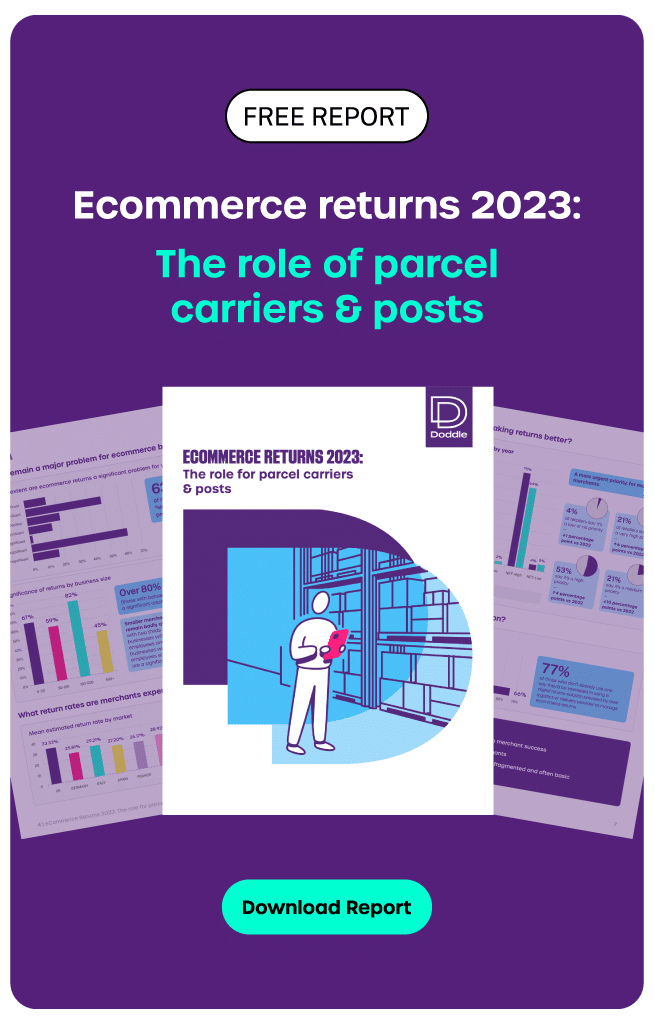Insight / Blog
Postal results, reforms, and returns

Summary: Posts around the world are seeking reform, but how can they drive improved results in the short term?
The beginning of March heralds a new round of results announcements, financial statements and commentary from postal leaders, and while results and success varied around the world, there was one theme that kept recurring in the words of the chief executives and senior figures, echoing through press releases and introductory comments.
In amongst the usual acknowledgements and thanks to their workforces, the nods to a dampened ecommerce market and the references to long-term strategic plans, postal leaders are growing more united in their calls for legislative shackles to be opened up. Emphasis is placed on the relative trajectories of parcel and letter volumes.
So what is it that postal CEOs want to see, and why?
Let’s look at a sample of quotes.
What they said:
Paul Graham, CEO, Australia Post Group: “there are still fundamental structural challenges confronting Australia Post”
Chris Peeters, CEO, bpost: “Initial observations underpin the need for a large-scale transformation of the company in order to address the challenges posed by managing a declining historic business which is currently insufficiently compensated by recent diversification efforts.”
Herna Verhagen, CEO, PostNL: “We implemented several measures to reduce costs and improve our cash position and have also been able to increase prices. But this was not sufficient to mitigate the severe cost pressures… We strongly believe the time has come to transform the delivery framework to better fit the needs of our customers and consumers and the current labour market.”
Alistair Cochrane, COO, Royal Mail: “…more must be done to transform our 500-year-old business into a modern, sustainable service that accurately reflects the needs of today’s postal users”
What they mean:
Posts are public services as well as businesses, and that tension is becoming harder to maintain. That’s because while service obligations remain in place to deliver letters to a certain standard (a number of days per week and within a certain timeframe after postage), letter volumes continue to capitulate and Posts are forced to seek alternative revenue in the parcels space, as well as through services (identity, banking, et al) and retail offerings.
But these can be very competitive sectors, and even where Posts do enjoy incumbent status with large market share, they are already having to fight to retain that lead. Several leaders touched this week upon the challenges of diversification and the importance of competing in the CEP (consumer express parcels) space.
There’s a further challenge – making the most of post offices and other postal service locations. Many Posts have extensive (and expensive) networks of post offices and other location types, which might be important for local communities but aren’t always profitable. Simply getting rid of these locations is often politically unpopular, and many posts simply won’t be able to get such a measure past their governments. That leaves them with the challenge to make the most of these locations and try to derive as much value as possible from them.
Essentially, postal leaders are trying to make the case through their public commentary on results that they need legislative change to reduce the costs associated with letter deliveries and significant real estate footprints.
If reform doesn’t come, what can postal operators do?
The governments of different nations have shown varying degrees of willingness to change the obligations their postal operators are subject to. Denmark abolished the universal service obligation (USO) last year, meaning Post Danmark (subsidiary of PostNord) was free to significantly increase prices (although certain services like deliveries to islands & free deliveries for the blind were ring-fenced).
Denmark has been a leader in transitioning official government communications to email and ensuring citizens have email access, reducing reliance on mail (hence the nation seeing the most precipitous mail volume declines in Europe). However, in most nations, mail remains an essential official channel of communication, which makes reducing or removing obligations a bigger political and social challenge.
So if USOs are likely to stick around for the time being, how else can Posts offset their declining mail revenues and shape their businesses towards the needs of the market?
Building new revenue streams
One option is for postal operators to add new strings to their bow in areas of the business with long-term growth potential. E-commerce growth has already helped many to offset and exceed their losses in mail by increasing their capacity to carry shipments from retailers to consumers. But a growing source of volume is currently under-serviced by many Posts: e-commerce returns
2023 Returns: The role of parcel carriers and posts
As e-commerce has grown, returns have become a significant challenge for retailers, driving down margins and increasing in frequency. That means that existing customers (and desirable prospective customers) for Posts are suffering from an issue, and solving that issue will give Posts control of a fast-growing source of parcel volume and revenue.
It goes beyond a simple volume play, however. By actually providing a returns technology solution to online retail that addresses the needs of the merchant, offering them visibility and control over their returns, Posts add an extra layer of value to their competitive offering and make it harder for merchants to simply turn to another parcel carrier – reducing customer churn as well as attracting new customers with a solution to one of their biggest e-commerce pain points.
Related articles
How 3PLs Can Cut Costs, Reduce Waste and Boost Revenue With Smart Returns Management
3PLs should take advantage of returns to help reduce cost, efficiently manage warehouse resources, and aid growth.
Saving profits and the planet: 4 ways to sustainable & cost-effective returns
Returns drain profits and damage sustainability. Luckily, retailers can implement both cost-effective and sustainable returns using these 4 ways.
Return fees or free returns: why not both?
Debates between return fees or free returns miss the bigger picture: how to address the root issues of returns.













